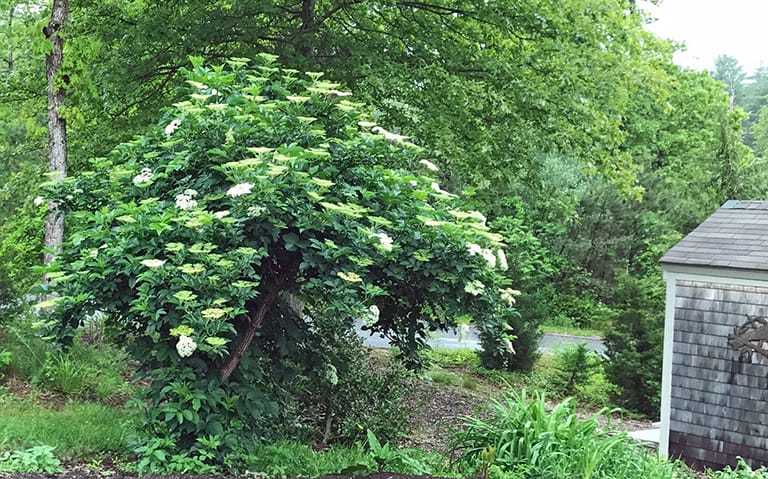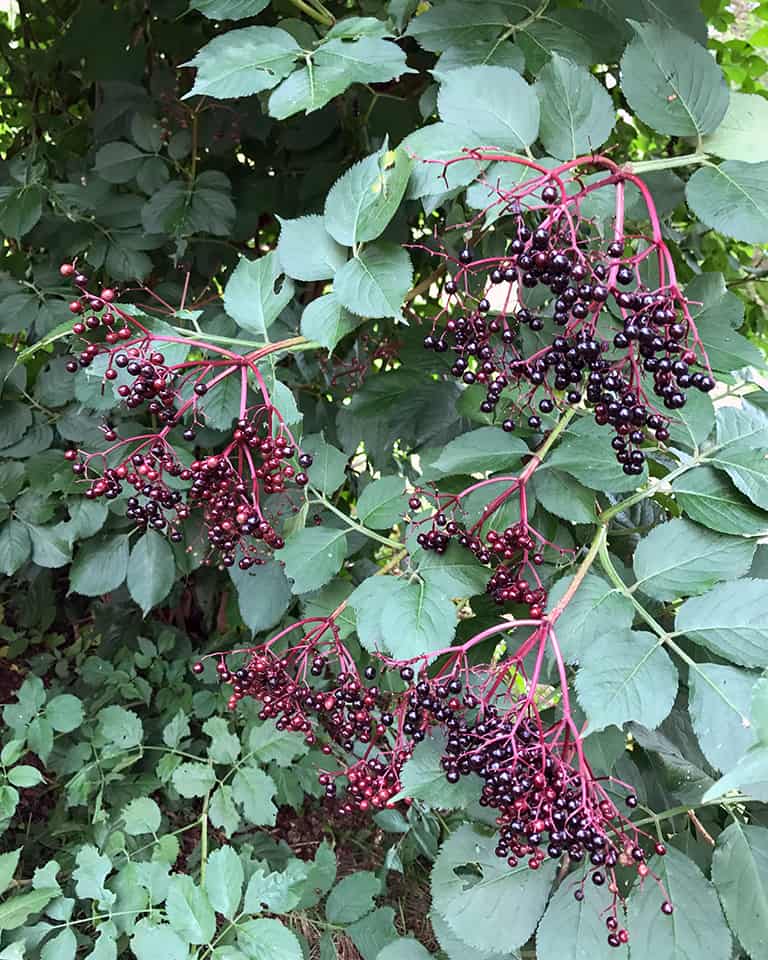Imagine:
This week’s story is true. Yesterday I went up to the large elderberry bush at the top of our cutting garden. This year’s berry production was particularly large, and I wanted to take advantage of this so that Ellen Zachos and I could use the harvest for our upcoming garden event.
But my experience of harvesting was deepened this year since I’d so recently heard Robin Wall Kimmerer speak at the annual GWA meeting. In her book, Braiding Sweetgrass (link at the bottom of this post) Dr. Kimmerer writes about the indigenous Americans’ approach to a taking food from the land.
“Never take the first. Never take the last. Take only what you need,” is part of what she writes. “Never take more than half. Leave some for others. Harvest in a way that minimizes harm.
Use it respectfully. Never waste what you have taken. Share. Give thanks for what you have been given.”
As I cut the fruit from this shrub these words ran through my mind and only half of the berries were cut leaving plenty for the birds and other wildlife. And before walking into the house with my harvest, I paused to say thank you.
Name: Sambucus nigra and Sambucus canadensis – aka elderberry, black elder.
Type of Plant: This is a shrub that can grow quite large, especially when planted in medium to wet soils. S. nigra is hardy in Zone 5-8 and S. canadensis is hardy in Zone 3-9. These shrubs flower in early June and grow well in a wide range of soils.
Why I love this: These are large shrubs with showy, white flowers. They are a good component for a flowering shrub border and they grow large enough (especially S. nigra) to be a good plant for screening. Perfect for country-style landscapes.
The birds love the berries and people use them to make wine, jelly etc. They also make good berry clusters to cut for arrangements.
A Word to the Wise: Repeat after me: these shrubs grow large. These shrubs grow large. Think small tree. Think sprawling. If you’ve ever uttered the sentence “This shrub is out of control,” this is not the plant for you.

In late-May or early-June the elderberry shrubs are filled with white, lacy flowers. These shrubs can sprawl, so be willing to cut off horizontal branches and shape the plant into a fountain style.

Later in the summer the white flowers are replaced by glossy black berries.

Harvest the berries when they are dark black.

The fruit on this plant is so shiny that they look like jewels, ready to be strung into jewelry.
Order Robin Wall Kimmerer’s book here:
 |

0 Comments